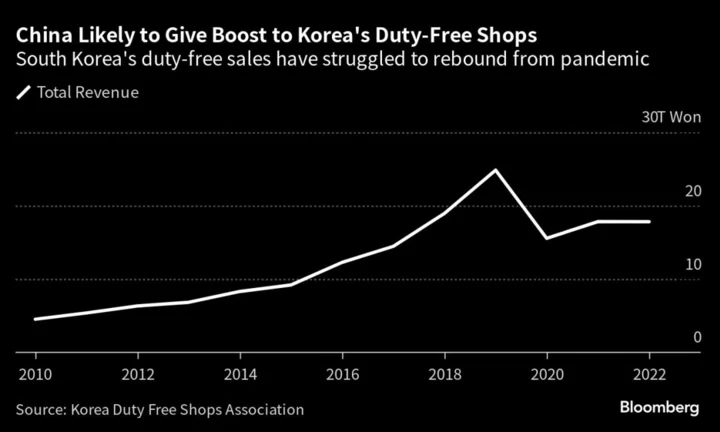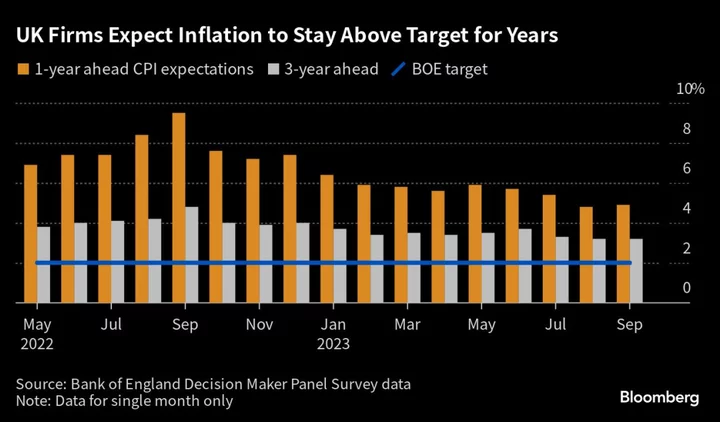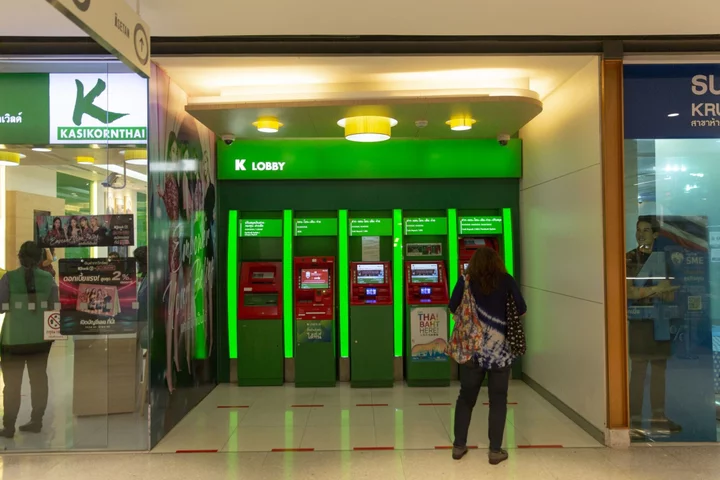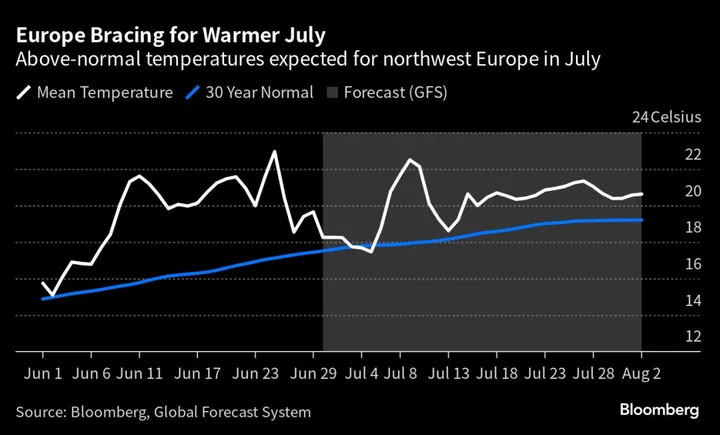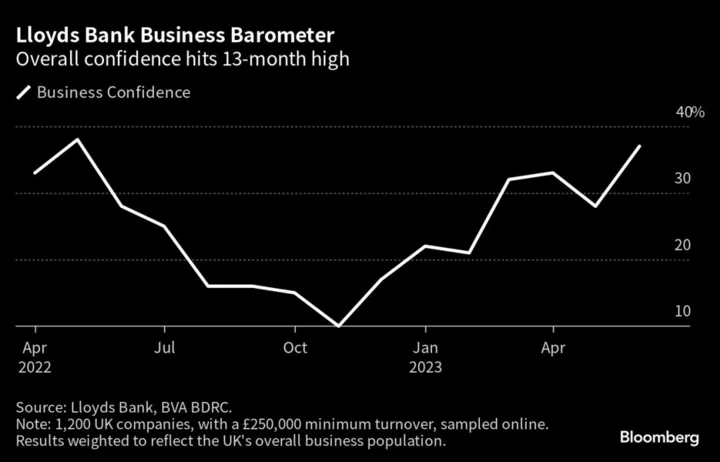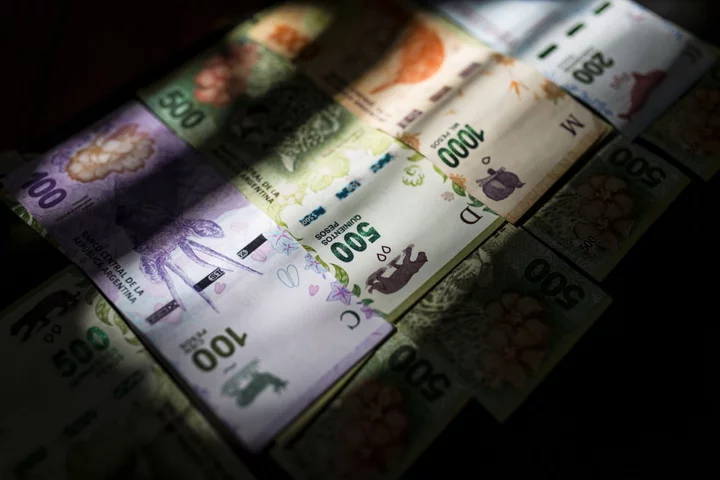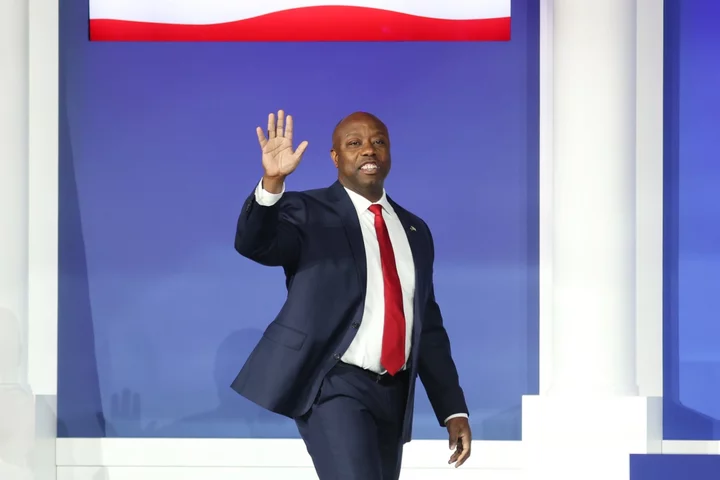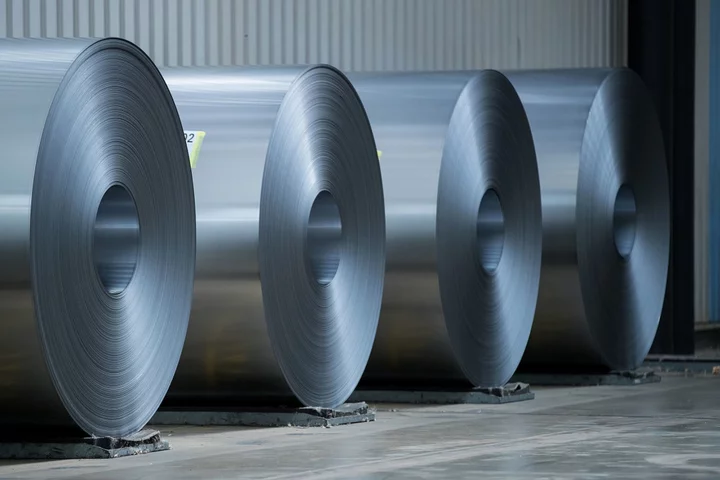Optimism that China will reopen the door for group tours to Japan and South Korea sparked a flurry of buying Thursday in retail, cosmetics and travel stocks in Tokyo and Seoul.
Shares in Japan ranging from cosmetics maker Shiseido Co. to department store operator Takashimaya Co. climbed after the Nikkei said China would allow group tours to the country from Thursday. Korean travel-related stocks including Hana Tour Service Inc. jumped after Maeil Business Newspaper said China may announce an end to its ban on group tours as early as this week.
The hopes for an increase in visitors come even as tensions between Beijing and its neighbors simmer. China warned Japan on Wednesday against “being led astray again” after a former prime minister said the country and its allies must show their “resolve to fight” to deter any possible invasion of the island. Japan’s current leader Fumio Kishida and South Korean President Yoon Suk Yeol are preparing for a summit with US President Joe Biden at Camp David next week, at which China is expected to be high on the agenda.
For the time being, investors are focused on how a rebound in tourism from China would help sectors that have suffered from a plunge in visitors since the start of the global pandemic. Travelers from China to Japan totaled 208,500 in June, which was about 24% of the level four years ago, according to data from the Japan National Tourism Organization.
“Investors will likely enjoy this rally for a while,” said Yu Jung-Hyun, an analyst at Daishin Securities Co. in Seoul. Many firms had been hurt by disappointment over China’s economic slowdown and the fact that not many Chinese people were traveling overseas, she said.
If the reports are accurate, an increase in visitors would help Japanese sectors such as retail, transportation and cosmetics, JPMorgan Securities Japan strategists Rie Nishihara and Yong Guo wrote in a note. An increase in Chinese visitors would add to positive momentum that has built up as earnings in the sectors come out better than expected amid a stronger economy, they wrote.
“On average, 10% upside potential remains between current stock prices and our price targets for inbound demand-related names,” the strategists wrote.
--With assistance from Youkyung Lee, Brian Fowler, Isabel Reynolds and Winnie Hsu.

